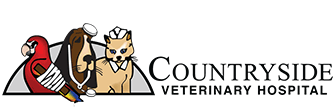Basic Obedience Training For Your Puppy
Basic obedience training can start the day you bring your puppy home. Start building a good relationship immediately by rewarding the behaviors you want to encourage. We focus on positive reinforcement instead of punishment as it has been proven most effective and helps you to build a good relationship with your dog instead of an adversarial one.
We promote positive tools such as Gentle Leader head halters, anti-pull harnesses like the Easy Walk, and Manners Minder remote treat dispenser. We do not recommend aversive training tools like choke chains, pinch collars, or shock collars.
The most common type of positive reinforcement training is clicker training. It uses the sound of the click to mark when your puppy is performing the desired behavior. It helps to time your reinforcement more exactly. It also allows you to shape behaviors in steps and more easily “catch” your puppy performing the desired behavior so you can reward it.
Most owners find they benefit from an organized obedience class unless you are experienced in dog training. There are many resources for training at home as well.
Timing is everything with obedience training. It is key to train your puppy when they are able to give you their full attention. Do not try to train at dinnertime or when you have a house full of people. Using a few short (5-10 minute) sessions every day is most effective.
End every training session on a positive note. If you run into difficulty take a step back in your training and try again so you give your puppy a chance to be successful.
Most puppies find food to be the most rewarding item. You can reserve a portion of their kibble to use for training as long as they are excited about their food. For some of the more important commands such as “come” or “drop it”, we really want to prioritize those commands for safety so it is best to use a high-value reward. Most dogs like chicken, cheese, or hotdogs. Cut the food into small pea-sized pieces.
For some dogs, food is not a strong reinforcer. In those cases, a favorite toy, or praise and attention may work better. In general food-motivated dogs are easier to train.
There are a few key commands that are considered essential for all dogs. These are: sit, stay, come, drop it, and down. Be sure you use the exact same word or phrase for each particular command. Avoid “no” as it is not specific enough and many dogs think it’s their name after a few months. Quiet, off, leave it, are much more specific and effective.
We can help!
Countryside Veterinary Hospital offers Dog Training Classes right here at our hospital!
Learn more about our classes
To sign up email us at vet@cvhonline or call us at 978-256-9555.
Here are some books and websites you may find helpful:
Books
Training the Best Dog Ever by Dawn Sylvia-Stasiewicz
Puppy Start Right by Kenneth M. Martin
Puppies for Dummies by Sarah Hodgson
Websites
Clicker Training Library
How to Start Training Your Puppy
Puppy Obedience Training: Tips for a Successful Approach
Teach Your Puppy These 5 Basic Cues
Gentle Leader
Easy Walk
Manners Minder
.jpg)
